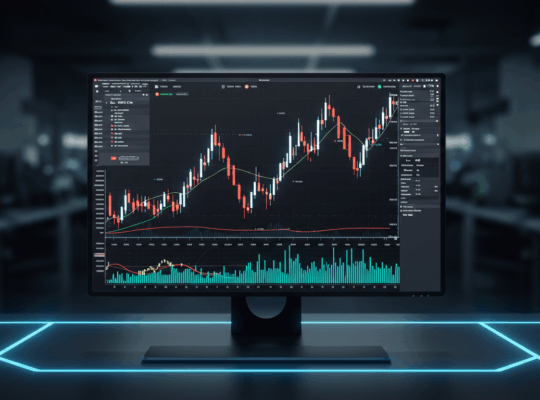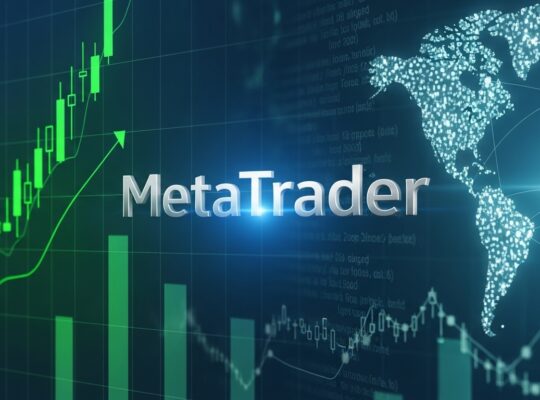Whether you’re a seasoned trader looking to scale your operations or a newcomer seeking to level the playing field, understanding forex robots could be the key to transforming your trading journey. In this comprehensive guide, we’ll explore everything from the fundamental mechanics of automated trading systems to the practical steps of choosing and implementing the right forex robot for your trading goals.
What Are Forex Robots?
Forex robots, also known as Expert Advisors (EAs) or automated trading systems, are sophisticated software programs designed to analyze market conditions and execute trades automatically without human intervention. Think of them as your digital trading assistants that never get tired, never let emotions cloud their judgment, and can process vast amounts of market data in milliseconds.
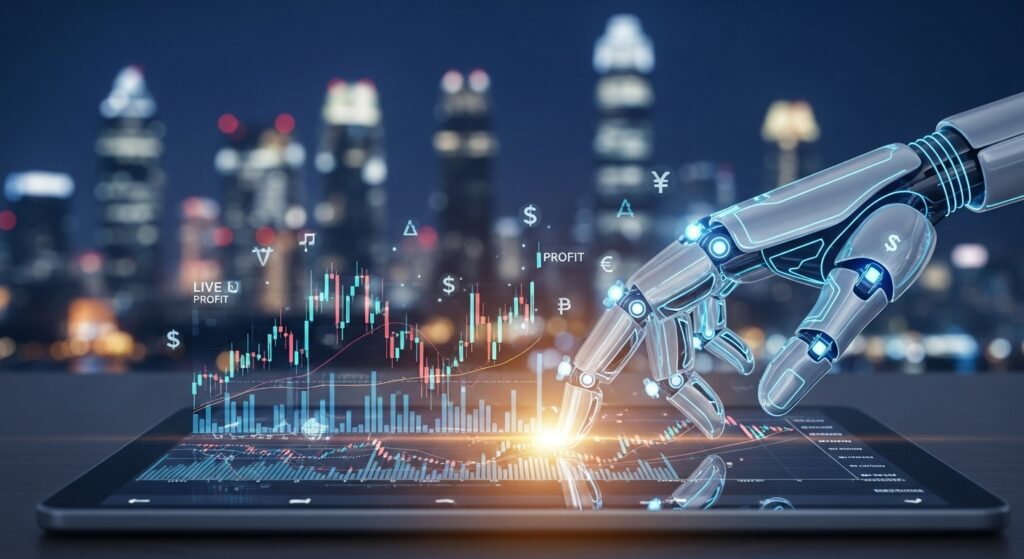
At their core, forex robots operate on pre-programmed algorithms that incorporate specific trading strategies, risk management rules, and market analysis techniques. These algorithms continuously scan currency pairs for trading opportunities based on technical indicators, price patterns, or mathematical models. When the predetermined conditions are met, the robot automatically places buy or sell orders, manages positions, and even closes trades according to its programmed parameters.
The beauty of forex robots lies in their systematic approach to trading. While human traders might hesitate when seeing a perfect setup or exit a profitable trade too early due to fear, robots execute their strategies with unwavering consistency. They don’t experience the psychological pressures that often plague manual traders, such as the fear of missing out (FOMO) or the reluctance to cut losses.
Modern forex robots can be incredibly sophisticated, incorporating multiple timeframe analysis, complex mathematical calculations, and even machine learning capabilities. Some robots specialize in scalping strategies, making numerous small-profit trades throughout the day, while others focus on trend-following approaches that capture larger market movements over extended periods. The diversity in robot strategies means there’s likely a solution that aligns with virtually any trading style or risk tolerance.
These automated systems typically run on popular trading platforms like MetaTrader 4 (MT4) or MetaTrader 5 (MT5), though they’re also available for other platforms like cTrader. The integration is usually seamless—once installed and configured, the robot operates independently, though traders can monitor performance and adjust parameters as needed.
How Forex Robots Work
Understanding the mechanics behind forex robots helps demystify these powerful tools and enables traders to make more informed decisions about their implementation. The process begins with market analysis, where the robot continuously monitors price movements, technical indicators, and other market variables across multiple currency pairs and timeframes simultaneously.
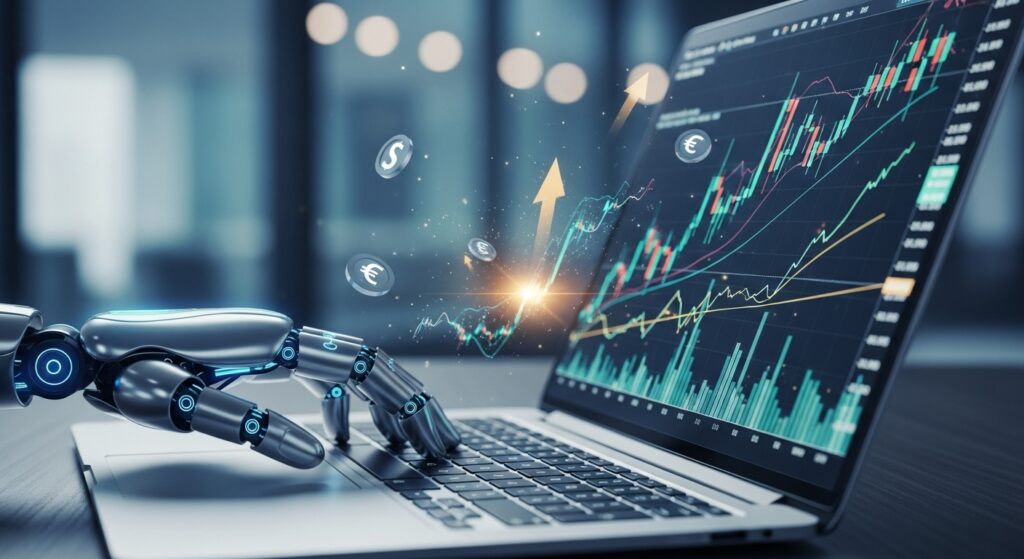
The analytical process is where the robot’s programming truly shines. Unlike human traders who might focus on one or two currency pairs at a time, a well-designed forex robot can analyze dozens of pairs simultaneously, identifying correlation patterns, support and resistance levels, trend directions, and momentum shifts. This analysis happens in real-time, with the robot processing new price data as quickly as it becomes available from the broker’s feed.
When the robot’s algorithm identifies a trading opportunity that meets its predetermined criteria, it moves to the execution phase. This involves calculating the appropriate position size based on risk management parameters, determining optimal entry points, and setting stop-loss and take-profit levels. The entire process, from signal generation to order placement, typically occurs within milliseconds, ensuring that traders capture opportunities at the most favorable prices possible.
Risk management is arguably the most critical component of any forex robot’s operation. Professional-grade robots incorporate sophisticated risk controls, including maximum drawdown limits, daily loss caps, and position sizing algorithms that adjust trade sizes based on account equity and recent performance. Some advanced robots even feature adaptive risk management that modifies parameters based on market volatility conditions.
The execution environment is equally important to a robot’s success. Most forex robots require a Virtual Private Server (VPS) to ensure uninterrupted operation, stable internet connectivity, and minimal latency between signal generation and order execution. This infrastructure ensures that the robot can operate 24/7 without being affected by power outages, internet disruptions, or computer maintenance on the trader’s end.
Monitoring and reporting capabilities round out the robot’s functionality. Quality forex robots provide detailed performance analytics, including profit and loss statements, win rates, average trade duration, and risk metrics. This data helps traders evaluate the robot’s performance and make informed decisions about parameter adjustments or strategy modifications.
Benefits of Using Forex Robots
The primary advantage of forex robots lies in their ability to eliminate emotional decision-making from the trading equation. Fear and greed are perhaps the two most destructive emotions in trading, causing traders to exit winning positions too early or hold losing positions too long. Robots operate purely based on logic and predetermined rules, executing strategies with mechanical precision regardless of market sentiment or external pressures.
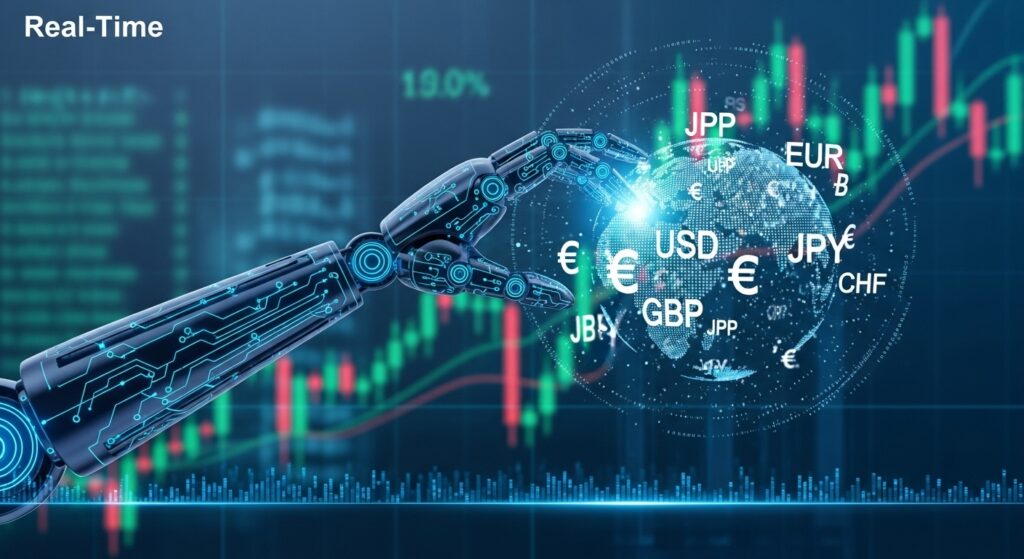
This emotional neutrality extends to consistency in strategy execution. Human traders often struggle with discipline, sometimes deviating from their trading plans when faced with market uncertainty or conflicting signals. Forex robots never second-guess their programming, ensuring that every trade aligns perfectly with the intended strategy. This consistency is crucial for long-term profitability, as it allows traders to truly test and refine their strategies without the variable of human inconsistency.
The 24/7 market monitoring capability of forex robots represents another significant advantage. The forex market operates around the clock, five days a week, across different time zones and trading sessions. While traders sleep, work, or attend to other responsibilities, their robots continue scanning for opportunities. This is particularly valuable for strategies that rely on specific market conditions that might occur during off-hours for the trader’s time zone.
Speed and efficiency in trade execution provide forex robots with a considerable edge in today’s fast-moving markets. While a human trader might take several seconds to analyze a setup and place a trade, a robot can complete the same process in milliseconds. In markets where prices can change rapidly, this speed advantage often translates into better fill prices and improved profitability.
The ability to backtest strategies thoroughly before deploying real capital is another compelling benefit. Forex robots can be tested against years of historical data, providing traders with statistical evidence of a strategy’s potential performance across various market conditions. This backtesting capability helps traders identify the most promising strategies and optimize parameters before risking real money.
Diversification becomes much more manageable with forex robots. A single trader can deploy multiple robots simultaneously, each focusing on different currency pairs, timeframes, or strategies. This diversification can help smooth out equity curves and reduce overall portfolio risk, as different strategies may perform well under different market conditions.
Disadvantages and Risks
Despite their numerous advantages, forex robots come with inherent limitations and risks that traders must carefully consider. One of the most significant challenges is their dependency on specific market conditions. Most robots are optimized for particular market environments, such as trending or ranging conditions. When market dynamics shift, a robot that performed exceptionally well in backtesting might struggle in live trading conditions.
The phenomenon known as “curve fitting” or over-optimization represents a critical risk in automated trading. This occurs when a robot’s parameters are excessively fine-tuned to historical data, creating impressive backtesting results that don’t translate to future performance. The robot essentially becomes too specialized for past market conditions and lacks the adaptability needed for evolving market environments.
Technical dependencies create another layer of risk. Forex robots require stable internet connections, reliable trading platforms, and consistent broker feeds to function properly. Platform crashes, internet outages, or broker server issues can disrupt robot operations at critical moments, potentially leading to missed opportunities or unmanaged positions. Even with VPS hosting, technical failures remain a possibility that traders must account for.
The lack of fundamental analysis capabilities in most forex robots represents a significant blind spot. While these systems excel at technical analysis and pattern recognition, they typically cannot interpret news events, economic releases, or geopolitical developments that can dramatically impact currency prices. Major news events can cause sudden market gaps or extreme volatility that robots aren’t equipped to anticipate or handle appropriately.
Market gaps and extreme volatility conditions can expose forex robots to substantial risks. During news releases or market opening gaps, normal technical analysis may become temporarily irrelevant, yet robots continue operating based on their standard parameters. This can result in significant losses if the robot enters positions just before major market disruptions.
Over-reliance on automation can also lead to complacency among traders. Some traders deploy robots and then neglect to monitor their performance regularly, missing warning signs of deteriorating performance or changing market conditions. Successful automated trading still requires active oversight and periodic strategy adjustments.
How to Choose the Best Forex Robot
Selecting the right forex robot requires careful evaluation of multiple factors, starting with a thorough analysis of historical performance data. However, traders must approach performance claims with healthy skepticism, as many vendors present backtesting results that may not reflect real-world trading conditions. The most reliable performance data comes from verified live trading accounts with detailed transaction histories spanning multiple market conditions.

When evaluating performance, focus on risk-adjusted returns rather than just headline profit figures. A robot that generated 100% returns while experiencing a 50% drawdown is far less attractive than one that produced 50% returns with a 10% maximum drawdown. Key metrics to examine include the Sharpe ratio, maximum drawdown, profit factor, and average trade duration. These statistics provide insights into the robot’s consistency and risk management effectiveness.
Strategy transparency is crucial when selecting a forex robot. Reputable vendors should provide clear explanations of their trading methodology, including the technical indicators used, entry and exit criteria, and risk management protocols. Be wary of “black box” systems that claim proprietary secrets—legitimate strategies can be explained in general terms without revealing specific parameter values.
The credibility and reputation of the robot’s developer or vendor deserve careful investigation. Look for companies with established track records, positive customer reviews from verified purchasers, and transparent business practices. Check for regulatory compliance, money-back guarantees, and responsive customer support. Companies that have been in business for several years and maintain active user communities typically offer more reliable products.
Platform compatibility and technical requirements must align with your trading setup. Ensure the robot supports your preferred trading platform (MT4, MT5, cTrader, etc.) and that you have the necessary technical infrastructure, including VPS hosting if required. Consider the robot’s system requirements and any additional software dependencies that might be needed.
Customization options provide flexibility to adapt the robot to your specific trading preferences and risk tolerance. Look for systems that allow adjustment of key parameters such as lot sizes, risk levels, trading hours, and currency pair selections. The ability to enable or disable specific strategy components can help you tailor the robot’s behavior to current market conditions.
Setting Up Your Forex Robot
The foundation of successful forex robot implementation begins with selecting an appropriate broker and account type. Not all brokers are suitable for automated trading, as factors like execution speed, spread consistency, and slippage can significantly impact robot performance. Look for brokers that offer low latency connections, tight spreads, and explicit support for automated trading systems.
Account type selection plays a crucial role in robot performance. ECN or STP accounts typically provide better execution conditions for automated strategies compared to market maker accounts, though they may come with higher commission costs. The improved execution quality often justifies the additional fees for serious automated trading operations.
Virtual Private Server (VPS) hosting represents a critical infrastructure decision for most forex robot implementations. A quality VPS ensures your robot operates continuously without interruption from power outages, internet issues, or computer maintenance. Choose a VPS provider with servers located close to your broker’s trading servers to minimize latency and maximize execution speed.
The installation process varies depending on your chosen platform, but most forex robots for MT4 or MT5 follow similar procedures. After purchasing or downloading your robot, you’ll typically need to copy the EA file to the appropriate folder in your trading platform’s directory, restart the platform, and then attach the robot to your desired currency pair charts. Always start with demo account testing to familiarize yourself with the robot’s behavior before deploying real capital.
Parameter configuration requires careful attention to your risk tolerance and trading objectives. Start with the robot’s default settings, which are usually optimized for general market conditions, then make gradual adjustments based on your specific requirements. Key parameters typically include position sizing, maximum drawdown limits, trading hours, and currency pair selections.
Regular monitoring and maintenance ensure optimal robot performance over time. Establish a routine for checking robot performance, reviewing trade logs, and updating parameters as market conditions evolve. Many successful automated traders perform weekly performance reviews and make periodic adjustments to maintain alignment with changing market dynamics.
Forex Robot Trading Strategies
Professional automated trading often involves deploying multiple forex robots simultaneously to create a diversified trading portfolio. This approach helps smooth out performance variations and reduces dependence on any single strategy’s success. By combining robots with different approaches—such as trend-following, mean reversion, and breakout strategies—traders can capture opportunities across various market conditions.
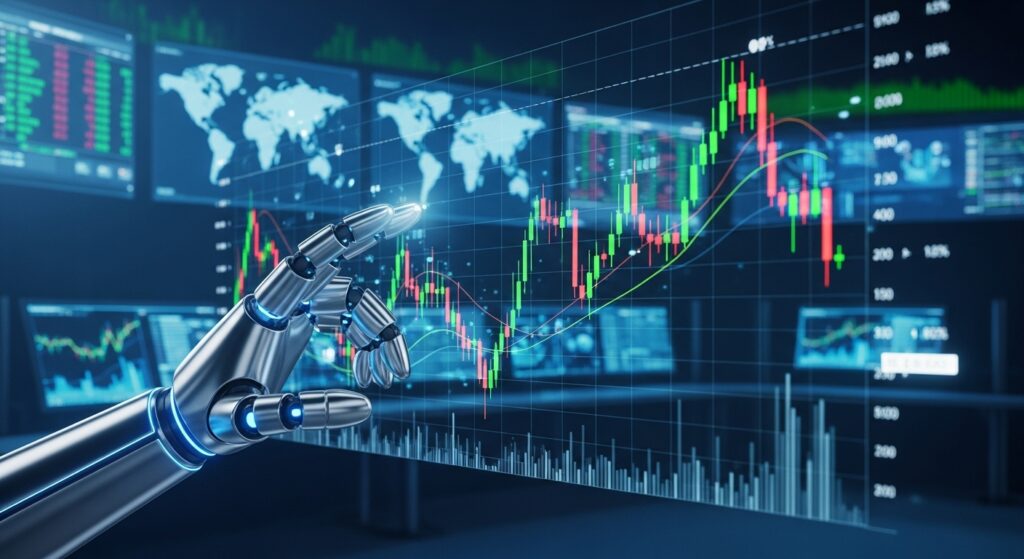
The concept of strategy correlation plays a vital role in portfolio construction. Ideally, you want to combine robots that exhibit low correlation in their trading signals and performance patterns. This ensures that when one strategy underperforms, others may continue generating profits, providing more stable overall returns. Advanced traders often use correlation analysis tools to optimize their robot combinations.
Hybrid trading approaches that combine automated systems with discretionary oversight can offer the best of both worlds. In this model, robots handle routine trade execution and market monitoring while human traders make higher-level strategic decisions, such as adjusting position sizes during high-impact news events or temporarily disabling certain strategies during unusual market conditions.
Time-based optimization represents another sophisticated approach to forex robot deployment. Different trading strategies may perform better during specific market sessions or times of day. For example, scalping robots might excel during the London-New York overlap when volatility and liquidity are highest, while trend-following systems might perform better during less volatile Asian session hours.
Market regime recognition is an advanced concept where traders adjust their robot deployment based on broader market conditions. During trending markets, trend-following robots receive larger allocations, while mean reversion strategies get increased allocation during ranging market conditions. This dynamic approach requires market analysis skills but can significantly improve overall performance.
Risk Management with Forex Robots
Position sizing represents the foundation of effective risk management in automated trading. Rather than using fixed lot sizes, sophisticated robots employ percentage-based position sizing that adjusts trade sizes based on account equity. This approach ensures that as accounts grow, position sizes increase proportionally, while also providing natural protection during losing streaks by reducing position sizes as equity decreases.
Maximum drawdown limits serve as crucial circuit breakers in automated trading systems. These limits define the maximum acceptable loss level before the robot temporarily stops trading, preventing catastrophic account damage during adverse market conditions. Professional traders typically set drawdown limits between 10-20% of account equity, though more conservative approaches may use lower thresholds.
The implementation of daily, weekly, and monthly loss limits adds additional layers of protection. These limits prevent robots from continuing to trade after experiencing significant losses within specific timeframes, allowing time for performance analysis and strategy adjustments. Many successful automated traders use a combination of percentage-based and absolute dollar amount limits.
Portfolio heat management becomes critical when running multiple forex robots simultaneously. This concept involves monitoring the combined risk exposure across all active positions to ensure that total portfolio risk remains within acceptable bounds. Advanced risk management systems can automatically reduce position sizes across all robots when total exposure exceeds predetermined levels.
Stress testing and scenario analysis help prepare automated trading systems for extreme market conditions. This involves running robots through historical periods of high volatility, such as the 2008 financial crisis or the 2020 COVID-19 market disruption, to evaluate how they would have performed during these challenging conditions. This analysis helps identify potential weaknesses and guides risk parameter adjustments.
Common Mistakes and How to Avoid Them
Over-optimization remains one of the most prevalent and costly mistakes in forex robot implementation. Traders often become obsessed with perfecting their backtesting results, continuously adjusting parameters until the historical performance looks exceptional. However, this process typically creates strategies that are too specialized for past market conditions and perform poorly in live trading. The key is finding the balance between optimization and robustness.
Unrealistic profit expectations frequently lead to disappointment and poor decision-making in automated trading. Many traders are attracted to forex robots by marketing claims of extraordinary returns, expecting their systems to generate consistent monthly gains of 20-50% or more. In reality, professional automated trading typically targets annual returns of 20-100%, with monthly performance varying significantly. Setting realistic expectations helps traders stick with profitable strategies during inevitable drawdown periods.
Insufficient testing represents another critical error that can prove costly. Many traders rush to deploy forex robots with live capital after only brief demo account testing or relying solely on backtesting results. Comprehensive testing should include forward testing on demo accounts for at least several months, testing across different market conditions, and verifying performance with small live account amounts before full deployment.
Neglecting ongoing monitoring and maintenance can quickly turn profitable robots into loss-generating systems. Market conditions evolve continuously, and strategies that work well in one environment may struggle in another. Successful automated traders establish regular review schedules, monitor key performance metrics, and make gradual adjustments to maintain optimal performance.
Inadequate infrastructure planning often undermines otherwise solid automated trading strategies. Traders sometimes overlook the importance of reliable internet connections, quality VPS hosting, or backup systems. A few hours of downtime during critical market conditions can erase weeks of profits, making robust infrastructure investments essential for serious automated trading operations.
The Future of Forex Robot Trading
Artificial intelligence and machine learning are revolutionizing the landscape of automated forex trading. Modern AI-powered trading systems can adapt to changing market conditions, learn from past performance, and continuously optimize their strategies without human intervention. These systems represent a significant evolution from traditional rule-based robots, offering the potential for improved performance and greater adaptability.

Cloud-based trading platforms are making forex robots more accessible and reliable. These platforms eliminate many technical barriers associated with VPS hosting and platform maintenance, allowing traders to deploy and manage automated strategies through web interfaces. Cloud platforms also offer better scalability, enabling traders to easily adjust their operations as their capital and experience grow.
Regulatory developments continue shaping the automated trading landscape. Various jurisdictions are implementing new rules regarding algorithm transparency, risk controls, and performance reporting for automated trading systems. These regulations aim to protect retail traders while ensuring market stability, and traders must stay informed about compliance requirements in their jurisdictions.
Social trading integration represents an emerging trend where successful forex robot strategies can be copied or followed by other traders. This democratization of profitable strategies allows novice traders to benefit from expert-developed systems while providing strategy developers with additional revenue streams through performance fees.
The integration of alternative data sources, such as social media sentiment, satellite imagery, and economic nowcasting data, is expanding the analytical capabilities of modern forex robots. These additional data streams can provide early warning signals for market movements and help robots adapt more quickly to changing conditions.
Maximizing Success with Forex Robots
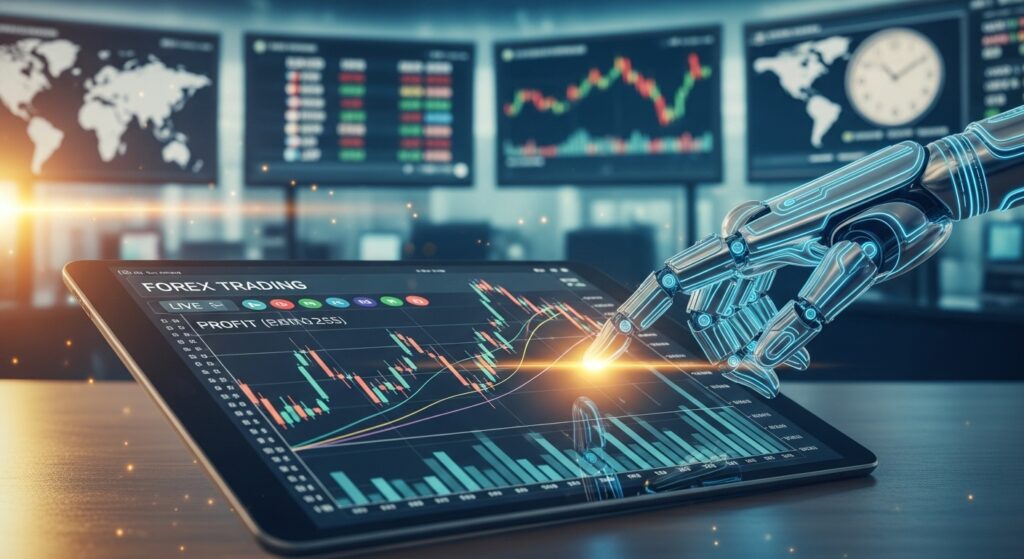
Success in automated forex trading requires a systematic approach that goes beyond simply purchasing and deploying a robot. The most successful automated traders treat their robots as tools within a broader trading business, maintaining active involvement in strategy selection, performance monitoring, and risk management decisions.
Developing a diversified portfolio of forex robots across different strategies, timeframes, and currency pairs helps create more stable returns and reduces dependence on any single approach. This diversification should be based on careful analysis of strategy correlations and risk contributions rather than simply deploying multiple systems randomly.
Continuous education and market awareness remain crucial even when using automated systems. Understanding market cycles, economic factors, and technical analysis principles helps traders make better decisions about when to deploy specific strategies and when to adjust parameters. The most successful automated traders combine technological tools with fundamental market knowledge.
Performance tracking and analysis should extend beyond simple profit and loss figures to include detailed metrics such as trade frequency, average holding periods, win rates by currency pair, and performance during different market conditions. This granular analysis helps identify optimization opportunities and potential issues before they become significant problems.
Building relationships with other automated traders, joining communities, and staying informed about new developments in the field provides valuable insights and opportunities. The automated trading community often shares experiences, strategies, and technical solutions that can benefit individual traders’ operations.
Conclusion
Forex robots represent a powerful tool for modern currency traders, offering the ability to participate in markets 24/7 with systematic, emotion-free precision. When properly selected, implemented, and managed, these automated systems can enhance trading performance and provide opportunities that might otherwise be missed due to human limitations.
However, success with forex robots requires much more than simply purchasing a system and letting it run unsupervised. The most profitable automated traders combine quality robots with solid risk management, realistic expectations, and ongoing active oversight. They understand that robots are tools to enhance their trading capabilities rather than complete replacements for market knowledge and strategic thinking.
The key to success lies in approaching automated trading as a business rather than a get-rich-quick scheme. This means investing time in proper education, conducting thorough due diligence when selecting systems, implementing robust risk controls, and maintaining realistic expectations about performance potential.
As the forex robot industry continues evolving with advances in artificial intelligence and machine learning, new opportunities will emerge for traders who stay informed and adapt their approaches accordingly. The future belongs to traders who can effectively combine human strategic insight with automated execution precision. Ready to explore the world of automated forex trading? Start by researching reputable robot vendors, testing strategies on demo accounts, and gradually building your expertise in this fascinating intersection of technology and finance. Remember, the most successful automated traders are those who never stop learning and adapting their approaches to changing market conditions.
Frequently Asked Questions About Forex Robots
How much money do I need to start using forex robots?
The minimum capital requirement varies significantly depending on the robot and your risk tolerance, but most professional-grade forex robots require at least $1,000 to $5,000 to operate effectively. This amount allows for proper diversification across multiple currency pairs and provides sufficient capital to withstand normal drawdown periods. Starting with smaller amounts is possible, but it may limit your strategy options and increase relative risk levels. Many successful automated traders recommend starting with demo accounts to test strategies before committing substantial capital.
Can forex robots guarantee profits?
No legitimate forex robot can guarantee profits, and any vendor making such claims should be avoided. Forex trading inherently involves risk, and even the best-performing robots experience losing periods. Quality robots aim to generate positive returns over time through systematic application of tested strategies, but they cannot eliminate the fundamental risks of currency trading. Successful automated trading focuses on risk management and consistent application of profitable strategies rather than seeking guaranteed returns.
Do I need programming skills to use forex robots?
Most commercial forex robots are designed for traders without programming backgrounds and can be used through simple installation and configuration processes. However, having basic understanding of trading platforms like MT4 or MT5 is helpful for proper setup and monitoring. Some traders eventually choose to learn programming languages like MQL4 or MQL5 to create custom indicators or modify existing robots, but this isn’t necessary for using most commercial systems effectively.
How do I know if a forex robot is legitimate or a scam?
Legitimate forex robots typically provide verified trading histories, transparent strategy explanations, and realistic performance expectations. Warning signs of scams include unrealistic profit claims (like guaranteed 1000% annual returns), lack of verified trading records, pressure to purchase immediately, and unwillingness to provide detailed strategy information. Always research vendor reputation, read reviews from verified customers, and test systems on demo accounts before investing real money.
Can I run multiple forex robots simultaneously?
Yes, running multiple forex robots simultaneously is a common practice that can improve portfolio diversification and risk management. However, this requires careful consideration of strategy correlations, combined risk exposure, and adequate capital to support multiple systems. Each robot should trade different currency pairs or use sufficiently different strategies to avoid conflicts. Professional traders often use portfolio management tools to monitor combined exposure and ensure total risk remains within acceptable limits.




